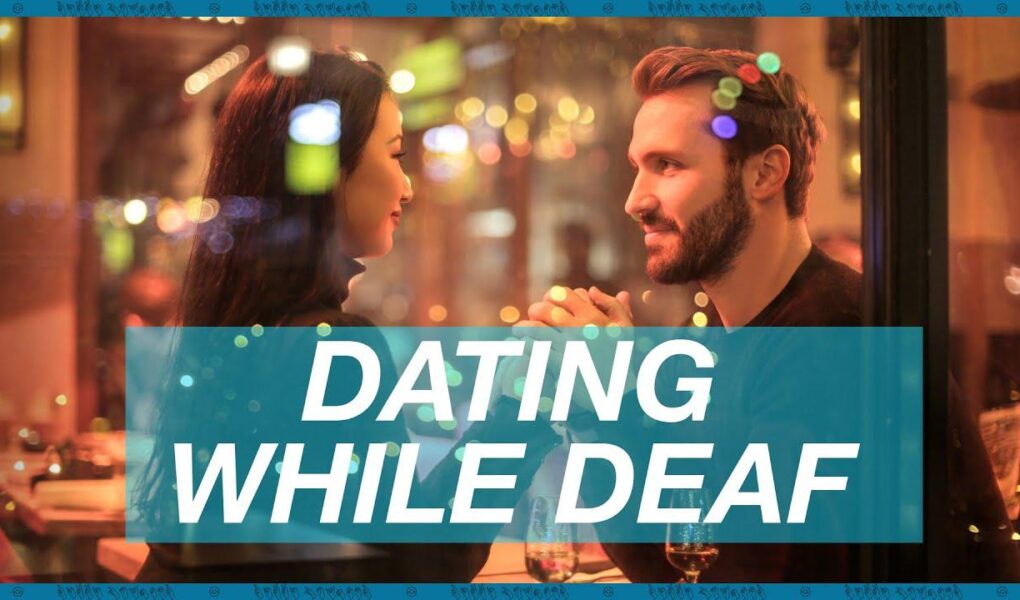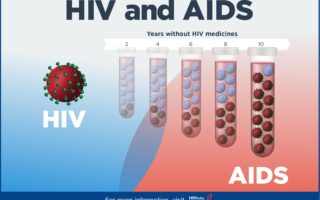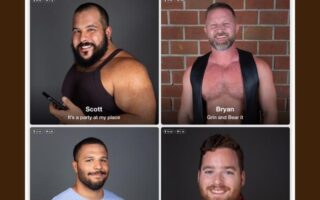In a world that thrives on connection, love knows no bounds—not even the barriers posed by hearing loss or sexual orientation. ”Deaf Gay Dating” explores the vibrant intersections of identity, communication, and intimacy within the deaf community. As societal norms evolve and the LGBTQ+ discourse expands, the unique experiences of deaf gay individuals come to the forefront, inviting us to consider how communication, perception, and shared identities shape romantic relationships. This article delves into the landscape of dating for those who navigate both deafness and gay identity, highlighting the triumphs and challenges they encounter while forging meaningful connections in an often hearing-centric society. Join us as we uncover the rich tapestry of love that transcends sound and celebrates the diverse expressions of human connection.
Table of Contents
- Exploring Connection Through Shared Experience in Deaf Gay Dating
- Effective Communication Strategies for Building Relationships
- Navigating the Intersection of LGBTQ+ Identity and Deaf Culture
- Creating Inclusive Spaces for Deaf Gay Individuals to Flourish
- Q&A
- Future Outlook
Exploring Connection Through Shared Experience in Deaf Gay Dating
In the world of dating, the journey is often enriched by our shared experiences, and this is especially true in the realm of Deaf gay dating. The nuances of communication can foster a deeper connection that transcends the traditional norms of dating. Engaging in conversation through sign language, for instance, can be an intimate experience, establishing a bond that feels personal and meaningful. Couples frequently discover that their shared community offers a unique understanding of mutual challenges and joys, leading to a more profound sense of belonging.
As individuals navigate the complexities of their identities, the intersections of being Deaf and gay can present both challenges and opportunities for connection. Participating in community events can create meaningful encounters, allowing people to connect over shared interests, such as:
- Artistic expression: Collaborating on projects can ignite passion and understanding.
- Outdoor adventures: Exploring nature together often fosters camaraderie.
- Social activism: Engaging in advocacy forms a strong bond over common goals.
The importance of shared experiences can be encapsulated in the following table, showcasing various activities that might inspire connection:
| Activity | Description |
|---|---|
| Sign Language Workshops | Develop skills while meeting potential partners. |
| Film Screenings | Watch deaf-centric films that resonate with personal stories. |
| Cultural Festivals | Celebrate identity through arts, food, and community. |
Effective Communication Strategies for Building Relationships
Building connections in the realm of dating, especially within the deaf gay community, relies heavily on the ability to express thoughts and feelings clearly and effectively. To cultivate meaningful relationships, utilize non-verbal communication alongside spoken or signed dialogue. This includes paying attention to body language, facial expressions, and gestures that can convey emotions and intentions without words. Contextually relevant cues can enhance understanding and show genuine interest. Consider embracing the art of storytelling with a focus on shared experiences, which aids in creating a bonding atmosphere and fosters openness.
Moreover, leveraging technological tools can bridge communication gaps and facilitate deeper connections. Using platforms that support video calls or text chats allows individuals to interact comfortably and consistently. Consider these strategies for effective engagement:
- Active listening: Regularly show engagement and understanding through nodding and affirming gestures.
- Clear expression: Use simple, direct language when sharing thoughts or feelings.
- Use of visuals: Incorporate images or videos to supplement descriptions of experiences or interests.
- Regular check-ins: Establish a routine of reaching out to maintain the relationship’s vitality.
Navigating the Intersection of LGBTQ+ Identity and Deaf Culture
In many communities, the convergence of LGBTQ+ identity and Deaf culture presents a vibrant tapestry of experiences that often go unrecognized. Deaf individuals who identify as LGBTQ+ navigate two distinct yet intertwined aspects of their identities, each with unique challenges and rewards. This intersection creates a rich conversation around visibility, acceptance, and community. Engaging with both worlds can foster a deep sense of belonging while also highlighting the unique challenges that arise, such as communication barriers or cultural differences within predominantly hearing LGBTQ+ spaces.
To understand the nuances of dating within this intersection, it is essential to recognize the various platforms and social contexts that facilitate connections. Many LGBTQ+ Deaf individuals benefit from tailored resources that acknowledge both their sexual orientation and their deafness. Consider the following avenues:
- Deaf LGBTQ+ Events: Spaces specifically designed for Deaf individuals to meet others who share both their identity and communication style.
- Online Communities: Platforms where users can connect through sign language or text, creating an accessible environment.
- Workshops and Meetups: Events that combine education on LGBTQ+ issues with Deaf culture to raise awareness and foster community support.
Here’s a brief overview of key aspects that play a role in navigating this space:
| Aspect | Importance |
|---|---|
| Communication | Essential for building connections, highlighting the need for accessible sign language interpretation. |
| Cultural Understanding | Promotes empathy and respect between hearing and Deaf LGBTQ+ individuals. |
| Support Networks | Creates a foundation where shared experiences can empower individuals. |
Creating Inclusive Spaces for Deaf Gay Individuals to Flourish
Building environments where Deaf gay individuals can thrive involves cultivating understanding, acceptance, and accessible communication. To achieve this, it is essential to prioritize visual communication within social settings, ensuring that conversation flows smoothly without the constraints of auditory barriers. This may include the integration of technologies such as real-time captioning, video relay services, and sign language interpreters during events. Moreover, fostering a culture of empowerment by providing Deaf individuals with leadership roles in organizing and hosting activities helps validate their presence and contributions to the community.
Additionally, creating inclusive spaces can be enhanced through deliberate programming that highlights the shared experiences of Deaf gay individuals. Events that encourage collaboration and storytelling can help bridge the gap between different identities, allowing members to express their challenges and victories. Simple initiatives, like the incorporation of Deaf-friendly dance parties or social meet-ups in visual arts, can help break down barriers and nurture connections. By focusing on building a supportive network, the community can create a safe haven where individuals feel valued and celebrated for who they are, paving the way for meaningful connections and relationships.
Q&A
Q&A: Navigating the World of Deaf Gay Dating
Q1: What unique challenges might deaf individuals face in the dating scene?
A1: Deaf individuals often encounter communication barriers that can complicate dating. For example, when meeting someone new, establishing a connection relies heavily on verbal communication, which may not be accessible. Additionally, societal stereotypes and misconceptions about deafness can lead to misunderstandings and prejudices. However, many deaf individuals are adept at using sign language and other forms of communication, so the key is finding an understanding partner who appreciates and adapts to these nuances.
Q2: How can technology play a role in facilitating connections for deaf gay individuals?
A2: Technology has revolutionized the dating landscape for many, including the deaf community. Various dating apps are specifically designed to cater to the needs of deaf users, often incorporating features that facilitate easy communication, such as video chat options for sign language users. Additionally, social media platforms allow for shared interests and experiences to be discovered, helping to build connections before moving to a more intimate level.
Q3: What suggestions do you have for deaf individuals when starting a conversation with potential partners?
A3: Keep it natural and authentic! Whether you’re using sign language, text, or any other form of communication, focus on shared interests as conversation starters. Consider mentioning hobbies, favorite movies, or recent experiences. Also, don’t hesitate to express your preferences regarding communication style early on, as this lays a strong foundation for understanding and comfort.
Q4: Are there specific communities or events that deaf gay singles should consider to meet others?
A4: Absolutely! Many cities have LGBTQ+ community centers that organize events specifically for deaf LGBTQ+ individuals. Look for local social gatherings, pride events, or clubs where you’re likely to meet like-minded people. Online communities and forums can also serve as valuable spaces for interaction, allowing you to connect with others who share your experiences and interests.
Q5: How can hearing partners better support and communicate with their deaf dates?
A5: Patience and openness to learning are essential. Hearing partners should take the time to understand basic sign language or gesture-based communication if their partner uses it. It’s important to establish clear communication preferences, whether through sign language, text messages, or lip-reading. Additionally, being attentive to the deaf partner’s needs in social settings—such as ensuring good visibility and avoiding crowded settings that can hinder communication—can make a significant difference.
Q6: What are some tips for building a romantic connection between deaf individuals in the gay community?
A6: Romance thrives on connection and understanding. Engage in activities that foster camaraderie and shared experiences—try joining classes or clubs together, exploring cultural events, or even taking classes to learn sign language together. Open and honest communication about your feelings and desires will not only strengthen your bond but also pave the way for a deeper emotional connection.
Q7: How should one approach the conversation about deafness early in a relationship?
A7: Approach the conversation naturally, as you would with any other personal aspect. Share your experiences with deafness, emphasizing what it means to you and how it affects your daily life and interactions. This openness invites your partner to express their thoughts and questions, creating a safe space for dialogue and understanding.
Q8: Any closing thoughts for deaf gay individuals looking for love?
A8: Remember that finding love is a journey for everyone, regardless of hearing ability. Embrace your identity, celebrate your uniqueness, and be confident in your worth. Surround yourself with a supportive community, and don’t shy away from being your authentic self in the search for connection. The right partner will appreciate you for who you are—deafness included. Happy dating!
Future Outlook
the landscape of deaf gay dating is one rich with possibility, connection, and understanding. As we peel back the layers of communication, intimacy, and shared experiences, we are reminded that love knows no boundaries—not sound nor societal norms. The journey to find companionship in this vibrant community is powered by authenticity, respect, and a collective desire for connection. For those navigating this unique dating scene, remember that every gesture, every moment of eye contact, and every shared laugh speaks volumes. So, whether you’re swiping, signing, or simply enjoying a cozy night in, embrace the adventure ahead. Together, let’s continue to celebrate the beauty of love in all its forms, ensuring every heart has a voice in the realm of romance.



